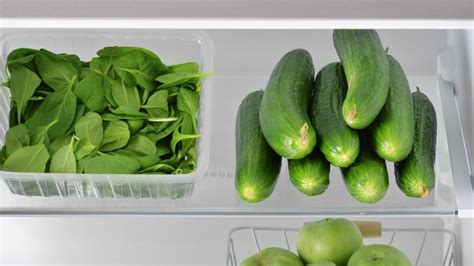When it comes to preserving the freshness of fruits and vegetables, the debate over whether to refrigerate cucumbers highlights a fascinating divide. Those who opt to keep cucumbers out of the fridge argue it maintains flavor and texture, while others insist that the cool environment extends shelf life. But what does the science say, and how do different storage environments really impact the quality of our produce?
One key point raised during discussions is the concept of **retrogradation of starches** in bread. This process makes bread go stale faster when stored in the fridge. The same principle might contribute to cucumbers losing their desirable crunch and becoming mushy if not stored correctly. A user noted that supermarkets often leave cucumbers unrefrigerated, hinting that similar home storage might yield better results.
However, another user raised a practical concern: many homes don’t maintain optimal humidity levels. Storing cucumbers in a fridge can sometimes prevent dehydration, especially in climates where room temperatures soar above the comfortable limits for vegetable storage. Here, the goal is to balance temperature and humidity effectively, something easier to achieve with **temperature-controlled environments** similar to those used by supermarkets for prolonged storage.
An interesting take from the discussion was the idea that if you need to store cucumbers for more than a couple of days, it is simpler to leave them unrefrigerated. Conversely, for weekly storage routines that many busy families adhere to, refrigeration seems almost inevitable. It’s easier to forget about cucumbers stored in the back of a fridge, which then can lead to waste when they are finally rediscovered in a less-than-fresh state.
Expanding the discussion, similar dilemmas exist for other vegetables like tomatoes and peppers. Many participants noted that these summer veggies benefit significantly from room temperature storage, avoiding the mushiness associated with refrigeration. In stark contrast, variables like travel distance, regional climate differences, and transportation methods play a critical role. Refrigeration during transport followed by room temperature at home can make for an arduous balancing act.
In terms of practical solutions, several users suggested a mix of methods. Storing cucumbers in airtight containers within the fridge could help, and for those seeking a middle ground, **wine coolers** maintaining temperatures around 13°C could potentially offer an ideal compromise. These cooler temperatures curb rapid spoilage without the harsh conditions of a typical fridge. Given the complexity and variety of responses, it’s clear that a one-size-fits-all approach is unlikely. Instead, evaluating individual household needs and local conditions appears to be key.
Overall, the heated debate on cucumber storage reveals broader concerns about our produce storage habits. By reflecting on these discussions, it empowers us to rethink how we store our vegetables and make informed decisions that balance convenience with optimal freshness and nutritional value.


Leave a Reply